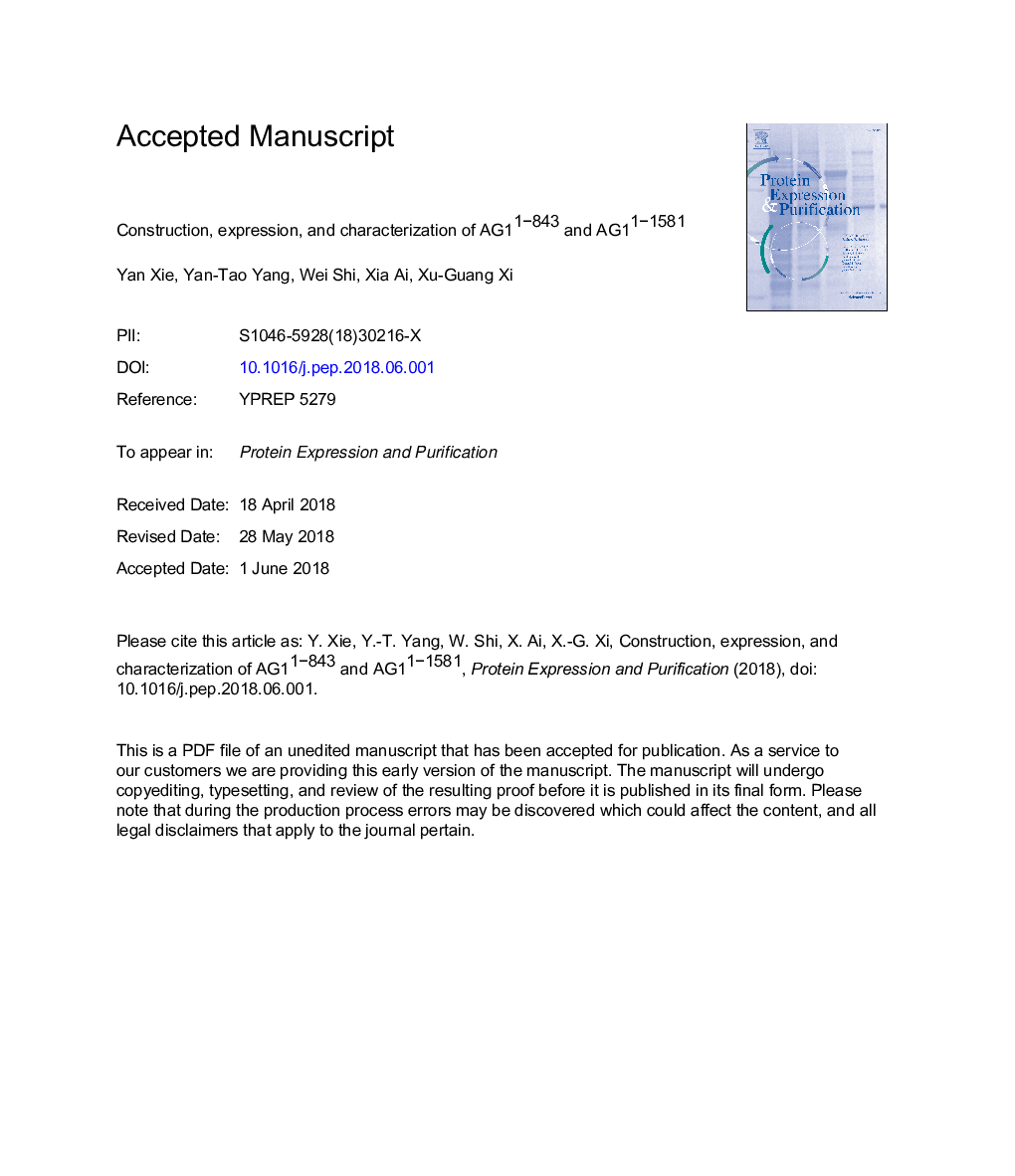| Article ID | Journal | Published Year | Pages | File Type |
|---|---|---|---|---|
| 8359254 | Protein Expression and Purification | 2018 | 23 Pages |
Abstract
AG1, a member of the DUF1220 protein family, exhibits the most extreme human lineage-specific copy number expansion of any protein-coding sequence in the genome. These variations in copy number have been linked to both brain evolution among primates and brain size in humans. Unfortunately, our current understanding of the structure and function of these proteins is limited because current cloning and expression techniques fail to consistently produce recombinant protein for in vitro studies. The present work describes a method for amino acid and DNA sequence optimization and synthesis, recombinant protein expression and analysis of two AG1 fragments, AG11â843 and AG11â1581. It was first necessary to modify the nucleotide sequence, while holding the GC content at 52.9%. The genes were then sectionally synthesized by overlap PCR. The resulting segments were cloned into the pET-15â¯b-sumo expression vector and subsequently transformed into BL21 (DE3) cells. After inducing their expression, the AG11â843 and AG11â1581 proteins were isolated and purified. Furthermore, using dynamic light scattering and gel filtration analysis, AG11â843 and AG11â1581 were shown to be present in tetrameric and dimeric forms in solution. To our knowledge, this is the first study to synthesize and express fragments of the DUF1220 protein family for in vitro analysis. Taken together, the proven utility and versatility of this method indicate that it can be used as an effective technique to construct and express other proteins with complicated sequences, thus providing the means to study their function and structure in vitro.
Related Topics
Life Sciences
Biochemistry, Genetics and Molecular Biology
Biochemistry
Authors
Yan Xie, Yan-Tao Yang, Wei Shi, Xia Ai, Xu-Guang Xi,
